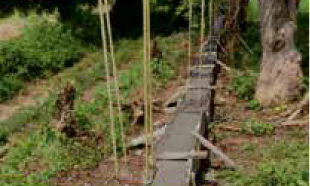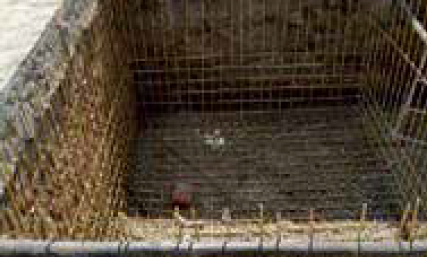Composite Fibreglass

Overview
Features and Benefits
FRP Rebar Shapes
FRP Rebar Mechanical
PropertiesEnvironmental Impact
of FRP RebarsFeatures of FRP Rebars
Design Guides
Application of
FRP RebarsInstallation and
HandlingMaintenance and Care
Cost-effectiveness
and Sustainability
Overview
FIBREREO – The Ideal Substitute for Steel Reo Mesh and Bars
FIBREREO Composite Fiberglass FRP Rebar
FEATURES OF FIBREREO
IDEAL FOR FLAT-WORK / SLAB ON GRADE




IDEAL FOR FLAT-WORK / SLAB ON GRADE
Maintain a competitive edge as a concrete contractor by considering the transition from steel to glass fiber reinforcement when providing estimates for driveway, footpath, or shed slab projects.
FIBREREO
FRP REBAR
FIBREREO is a high-performance FRP rebar designed to replace traditional steel rebars in concrete reinforcement.
Traditional steel rebars are commonly used in concrete reinforcement, but they have some disadvantages such as low corrosion resistance, which leads to reduced lifespan and higher maintenance and repair costs over time.
FIBREREO offers several advantages over traditional steel rebars, including superior strength, durability, and corrosion resistance.

By using FIBREREO in concrete reinforcement, customers can benefit from a longer lifespan, reduced maintenance and repair costs, and increased safety.
In this product guide, we will explore the features, benefits, applications, installation and handling, and maintenance and care of FIBREREO FRP rebar.
Features and Benefits

Using FIBREREO in concrete reinforcement offers several benefits over traditional steel rebars, including a longer lifespan, reduced maintenance and repair costs, and increased safety.
FIBREREO‘s superior corrosion resistance means it can withstand harsh environments such as coastal areas, where traditional steel rebars would corrode and weaken over time. This leads to reduced maintenance and repair costs over the lifespan of the project.
FIBREREO‘s lightweight nature makes it easier to transport and install, leading to lower installation costs and reduced labor requirements.
Because FIBREREO is non-conductive, it can be used safely in electrical applications where traditional steel rebars would pose a safety hazard, increasing the safety of the project.
Using FIBREREO in concrete reinforcement is also an environmentally friendly and sustainable alternative to traditional steel rebars, as it reduces the carbon footprint of the project and contributes to a greener future.
Overall, the benefits of using FIBREREO FRP rebar make it a cost-effective and reliable solution for concrete reinforcement in various applications and environments.
Features and Benefits

CONVENTIONAL SHAPES:
- Hoops, spiral, rectangular bents .
- 90 degrees bents, i.e. C-shapes
- Straight cut-to-length
SHAPES WE CAN NOT MAKE
- Too frequent bents
- Too sharp angles
FRP Rebar Mechanical Properties

FRP Rebar Mechanical Properties
Environmentally Responsible = Solution For The Future
As per “Environmental & Economic Comparison of FRP reinforcements & steel reinforcements in concrete beams based on design strenght parameters”, 2019
As per “Life-cycle assessments of rock bolts / Tunneling journal, June/July 2017, p 47-49./ J. Kodymova, A..H. Thomas & M.Will”,
Features of FRP Rebars
What are FRP Rebars?

PRODUCT CHARACTERISTICS:
- Installation labor reduced by a factor of two to three.
- Available in straight bars of up to 11.8m or in coils spanning 50m.
- Exhibits a bond strength of 10 MPa, enabling a shorter lapping length.
- More robust and lighter than steel, possessing twice the tensile strength of steel while weighing only a quarter as much as a steel bar of equivalent diameter.
- Resistant to corrosion and non-conductive. It serves as an ideal reinforcement option in settings that encounter water, salts, humidity, as well as high voltage currents and magnetic fields.
Design Guides
ACI 440.1R-03
Guide for the Design and Construction of Concrete Reinforced with FRP Bars
ACI 440.1R-03
Guide for the Design and Construction of Externally Bonded FRP System for Strengthening Concrete Structure
ACI 440.1R-03
Guide Test Methods for Fiber-Reinforced Polymers (FRPs) for Reinforcing or Strengthening Concrete Structures
ACI 440.1R-03
Prestressing Concrete Structures with FRP Tendons

Application of FRP Rebars
Common Applications
- Suitable for use in corrosive and marine settings, including structures such as bridge pylons, seawalls, quays, and jetties.
- Ideal for flatwork and slab on grade projects.
- Also applicable in various other scenarios, such as agricultural projects, architectural precast elements, basement floors and walls, bridge decks and roads, chemical plants, electromagnetic facilities, footings, external strengthening, loading docks, petrochemical complexes, pool decks, residential foundations, structural floors, and swimming pools.
- Additionally, it can be utilized for concrete and marine structure repairs.
- Widely used in the water treatment plants.






Installation and Handling










Maintenance and Care


Cost-effectiveness and Sustainability




